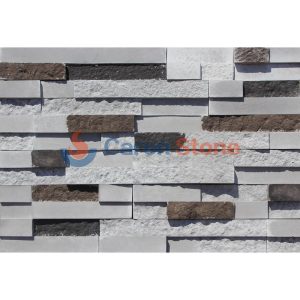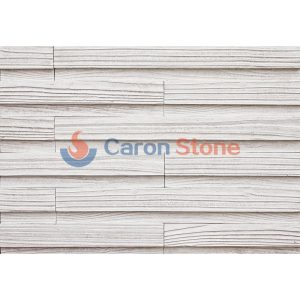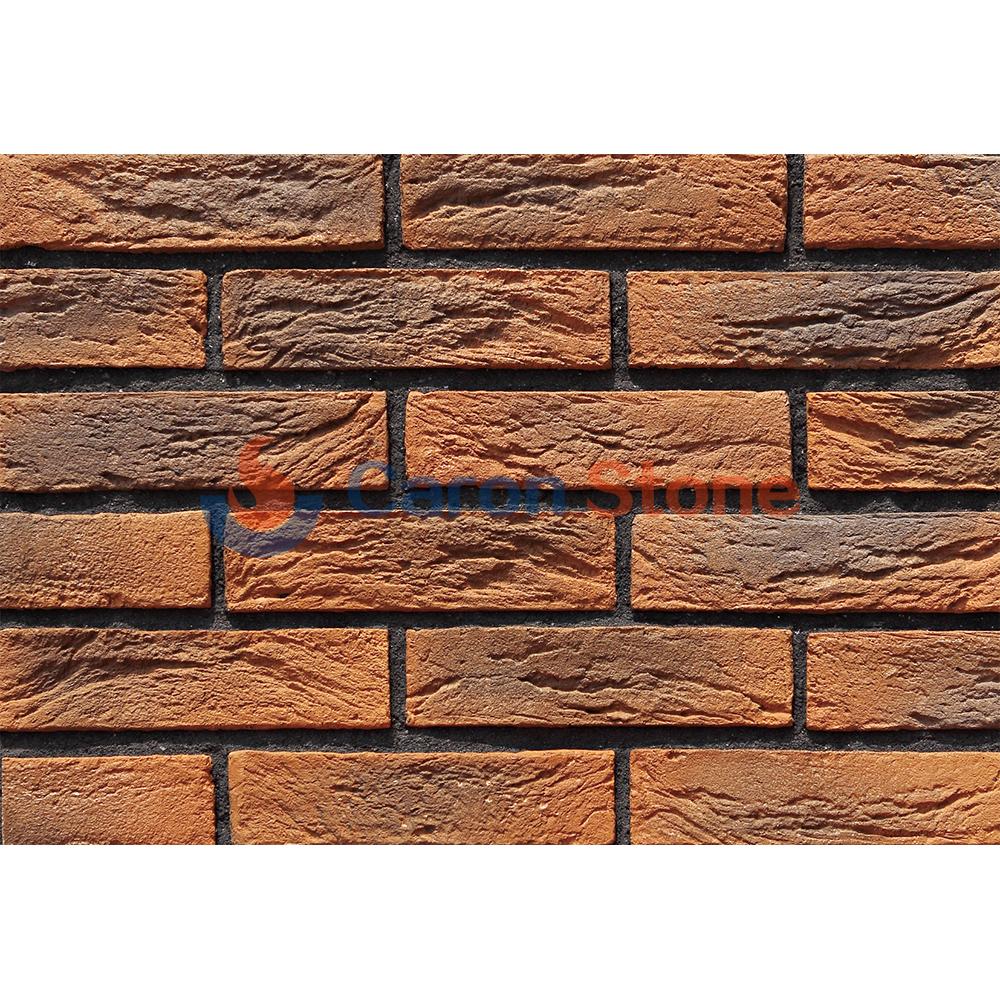In the upsurge of green buildings, various environmentally friendly materials and design concepts are emerging one after another, and artificial stone, as a material that is both beautiful and practical, is increasingly being used in green building projects. It not only performs very well but also considerably raises the building’s environmental friendliness. Artificial stone does, however, have several difficulties in practical uses even if it offers great benefits in green structures. The present use of artificial stone in green buildings and its difficulties will be covered in this paper together with some references and ideas for next architectural design.

GB-KC04 China faux modern cultured ledgerstone veneer panel for wall cladding
1. Application of artificial stone in green buildings
Artificial stone is extensively used in many building components in the framework of green building since of its outstanding performance and environmental friendliness. Artificial stone has several primary uses in green architecture, including:
1.1 Aesthetic reflection of environmentally friendly design
Artificial stone can be quite tailored depending on design requirements to replicate the texture of natural stone while avoiding the environmental consequences of natural stone mining. It has rich color and texture options and can match various architectural styles to achieve the dual goals of aesthetics and environmental protection. For instance, the use of artificial stone can efficiently save resource use and give the building a long-lasting aesthetic impact in the ornamentation of the outside walls of green buildings.
1.2 Energy saving and thermal insulation performance
Artificial stone has good thermal insulation properties, which makes it play an important role in building energy conservation. Effective reduction of the building’s energy consumption, use of air cooling and heating, hence lowering carbon emissions, depends on good thermal insulating performance. For external wall and floor applications of residential or commercial structures, for instance, fake stone’s thermal insulating properties can assist the building’s energy efficiency increase and stable internal temperature be maintained.
1.3 Low maintenance and durability
Artificial stone’s easy-to-clean, stain-resistant, wear-resistant qualities help to explain its long service life. Compared with traditional building materials, it can reduce the frequency of maintenance and replacement, thereby reducing the life cycle cost of the building. Using artificial stone in public spaces and high-traffic areas, for instance, will help to greatly lower resource waste and increase maintenance efficiency.
2. Challenges faced
Although artificial stone performs well in green buildings, it also faces some challenges during application:
2.1 Environmental issues during production
The production process of artificial stone involves the use of chemical synthetic resins, which may have a certain impact on the environment. While many producers of fake stone are striving to minimize their environmental impact by means of bettering their manufacturing techniques, they still have to pay close attention to the waste and emissions produced during the manufacturing process. Achieving green production presents a significant obstacle for the use of artificial stone in green constructions.
2.2 Recyclability of materials
Though artificial stone has a lengthy service life, its materials’ recyclability remains a problem. Artificial stone’s recycling technology is not yet developed, so it is challenging to efficiently recycle and rework used artificial stone materials. This not only strains the surroundings but also restricts the use of fake stone in green buildings to reach entirely sustainable objectives. Therefore, improving the recycling rate of artificial stone is an important direction for future development.
2.3 Cost and market acceptability
High-quality artificial stone materials generally have a higher cost, which may limit their widespread use in green buildings. In some projects with limited resources, cost is still a major factor even if performance and durability of this material are outstanding. Another difficulty for the marketing and application of fake stone is how to balance the performance and cost of materials to make them more market competitive.
2.4 Long-term environmental impact evaluation
The environmental impact of artificial stone is not only reflected during the production process, but also during the use and disposal stages. Ensuring that artificial stone satisfies green building criteria mostly depends on a thorough long-term evaluation of its environmental impact and knowledge of its whole contribution to the surroundings. increased reasonable green building rules and standards must be developed by means of increased study and data assistance.
3. Future development direction
The future path of artificial stone should incorporate the following elements to help to address the aforesaid difficulties:
3.1 Promote green production technology
Using non-toxic or low-volatile organic compounds resins to lower production waste and emissions and so enhance the environmental protection of the manufacturing process will help to strengthen the research and development of environmentally friendly technologies in the production process.
3.2 Research and development of recyclable materials
Investigate and create recyclable synthetic stone products to increase their capacity for recycling and reuse so attaining resource recycling.
3.3 Cut expenses and raise market acceptance.
Large-scale production and technological innovation help to lower the manufacturing cost of fake stone, increase market competitiveness, and enable application in more green building projects.
3.4 Comprehensive assessment of environmental impact
Strengthen the comprehensive assessment of the environmental impact of artificial stone at all stages, formulate scientific and reasonable green building standards, and ensure that they truly meet the requirements of green buildings.

GB-P01 Artificial cultured stone wood grain texture white wall stone tile
In summary, the application of artificial stone in green buildings demonstrates its excellent environmental performance and practical value, but it also faces some challenges in the production process, material recycling, cost control, and environmental impact assessment. The potential of fake stone in green buildings will be better used by always increasing green production technologies, enhancing material recycling capacities, lowering costs, and doing thorough environmental assessments. Artificial stone will remain crucial in next green building designs and help the building industry to grow sustainably.





